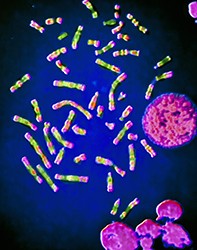Peer Reviewed
Men's health
Klinefelter’s syndrome. Management issues according to life stage
Abstract
Males with Klinefelter’s syndrome (KS) have unique health requirements, with specific issues arising during different life stages and necessitating a multidisciplinary approach. Early diagnosis and intervention in patients with KS will lead to improved developmental and physical outcomes.
Key Points
Klinefelter’s syndrome (KS) is the most common cause of primary testicular failure. The 47,XXY karyotype results from an additional X chromosome originating from either parent. The incidence of KS varies between one in every 450 to 650 men and it is estimated that over half of all cases are never diagnosed, possibly due to the broad spectrum of symptoms and phenotype. In Australia the highest detection rates are in the 25- to 34-year-old age group, reflecting presentations for infertility evaluation. Clinical features of KS are outlined in Figure 1 and the Box. Chromosomal analysis is required for diagnosis.
Picture credit: © CNRI/SPL.
Purchase the PDF version of this article
Already a subscriber? Login here.

